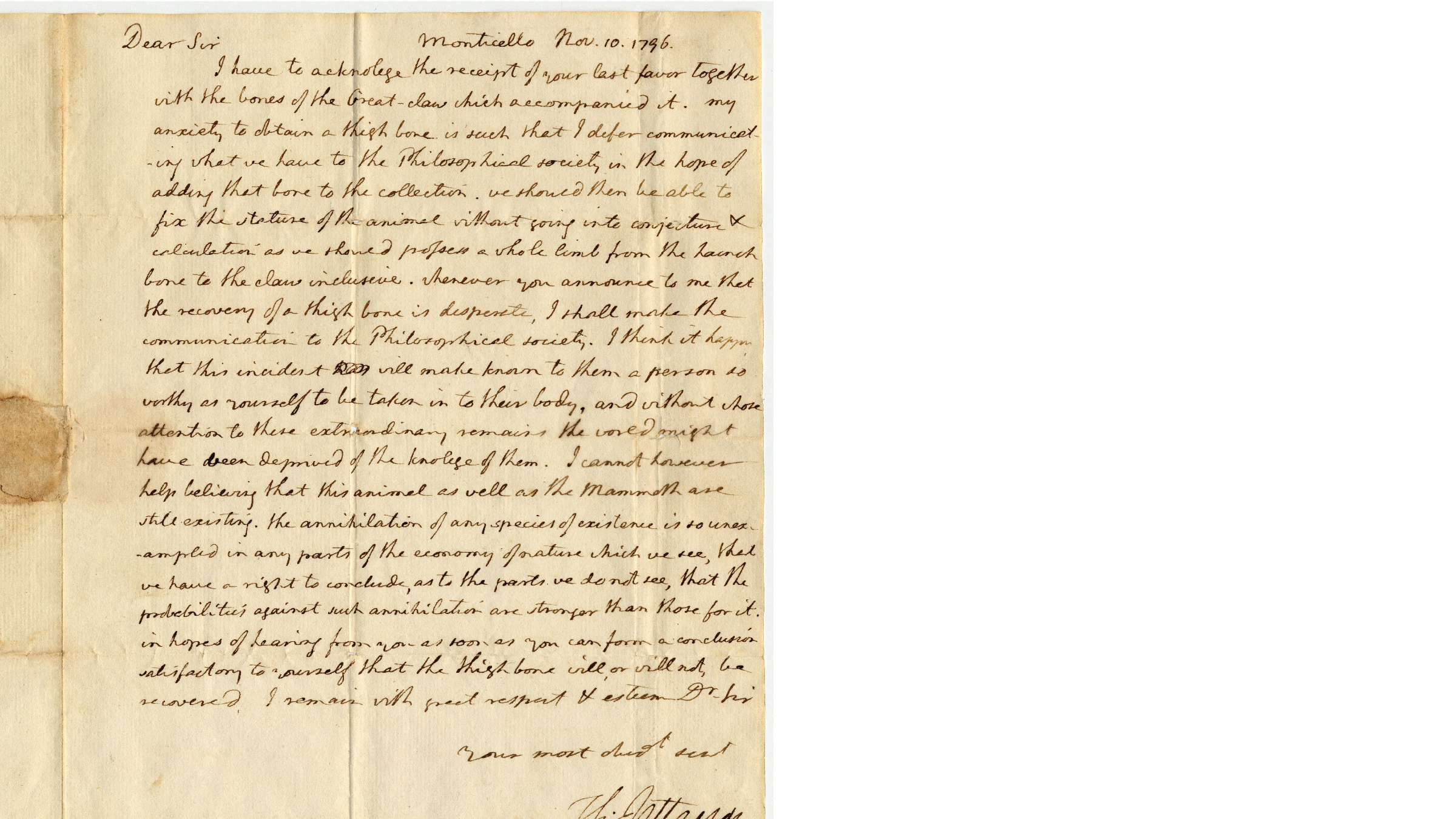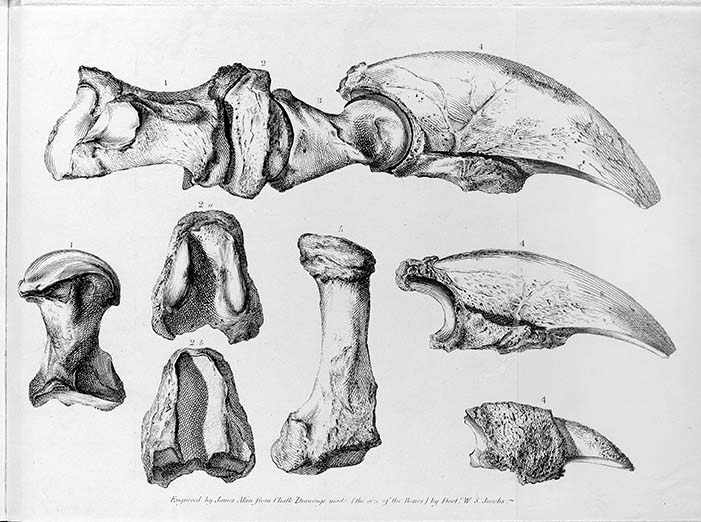Whose Bones are Those?
Today when a visitor walks into a natural history museum there are dinosaurs and prehistoric creatures that they can identify right away. Some people know dinosaurs like the T-rex or the brachiosaurus by sight, others might know prehistoric creatures like the mastodon and mammoths. However, these creatures were not always familiar to us. In the 1790s, Thomas Jefferson received a set of fossils from his friend John Stuart from what is now West Virginia. Among these fossils were a limb and claw that he believed came from a great prehistoric lion which he named megalonyx or “great claw.” In a letter to John Stuart he states he did not want to make any announcement about the bones until he had more bones to back up his great cat hypothesis. Jefferson thanked Stuart in the letter below for sending him the bones but also asks Stuart if he has found the thigh bone.
“My anxiety to obtain a thigh bone is such that I defer communicating what we have to the Philosophical society in the hope of adding that bone to the collection. We should then be able to fix the stature of the animal without going into conjecture…”

Like any scientist today, Jefferson wanted more evidence to back up his hypothesis regarding the kind of animal these bones came from. The first time you see a new species and without complete information you can sometimes jump to the wrong conclusion. Caspar Wistar, a Philadelphia physician and anatomist saw the bones and made a sketch of them. Wistar then used comparative anatomy—the process of comparing the bones and their structure to other living animals. He noticed that the claw was like a sloth. He also noticed that the claw did not retract like a lion’s would. Wistar therefore concluded that this was a ground sloth, which is no longer around today, not a prehistoric cat. Jefferson would go on to write and discuss the megalonyx, which was named after him, the Megalonyx jefferonsii.

The APS Museum education department also used this means of identification during last year’s 2017 Fall Festival at John Heinz National Wildlife Refuge at Tinicum. The education department brought two of the facsimile fossils in our touch collection (a mastodon molar and a ground sloth toe) to the festival and we had people guess what animal they were from. This activity showed people how difficult it was for the early paleontologists and naturalists trying to make sense of the world and creatures in it that are no longer here. When some people saw the ground sloth toe, they reacted similar to Jefferson’s thinking it could be a ferocious animal. Even today people struggle with the same questions as the early naturalists and paleontologists when trying to figure out where the fossils were from but we hope these mysteries inspire the public to investigate the world around them.
